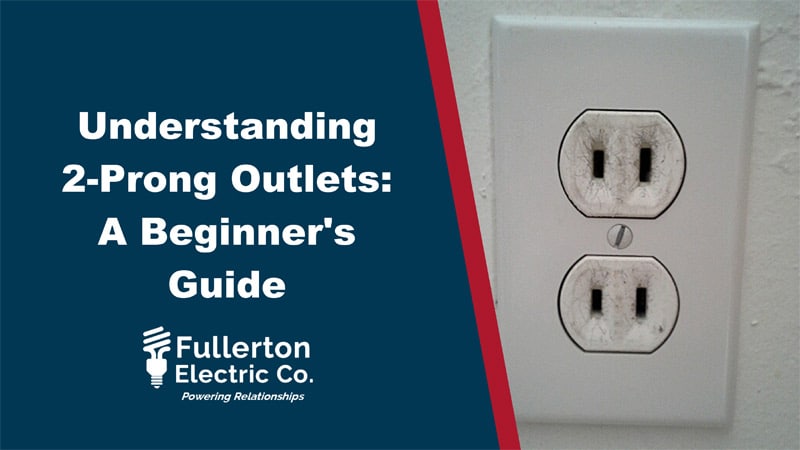Share
In the world of electrical outlets, you might have come across those classic two-prong outlets that seem a bit different from the three-prong outlets we commonly use today. But what exactly are these two-prong outlets, and why do some homes still have them? Let’s break it down in this beginner’s guide.
What is a 2-Prong Outlet?
An electrical outlet, properly referred to as a receptacle, is a point in the wiring system where electrical current is supplied to equipment like appliances, electronics, and lighting fixtures. The two-prong outlet, sometimes found in older homes, has two parallel slots that accommodate the conductors: the hot wire (typically black) and the neutral wire (usually white). These outlets lack a grounding wire, which is an essential safety feature in modern electrical systems.
The Transition to 3-Prong Outlets
In more recent times, electrical systems have advanced to include three-prong outlets. The addition of a third prong introduced the grounding wire, which provides a critical safety path for electrical faults. The grounding wire is a safeguard that directs electrical current away from you and your devices in case of a fault or malfunction.
Why Grounding Matters
Grounding is crucial for safety. It prevents electrical shocks by providing a low-resistance pathway for fault currents to flow safely into the ground rather than through you or your appliances. Imagine an older washing machine plugged into a two-prong outlet. If the insulation on the wires wears down and the exposed wire comes into contact with the metal housing, the housing becomes electrified. Without a grounding path, touching the washing machine and another conductive surface could lead to a shocking experience.
Options for Upgrading
If you have a home with two-prong outlets and want to use modern appliances, there are options beyond rewiring your entire house. One clever solution is to install a special type of outlet that combines Ground Fault Circuit Interrupter (GFCI) and Arc Fault Circuit Interrupter (AFCI) protection. These outlets, often equipped with the “Test” and “Reset” buttons, are designed to provide an extra layer of safety even in the absence of a dedicated grounding wire. They can replace your existing two-prong outlets while offering protection against electrical hazards.
Installing GFCI and AFCI Outlets
When upgrading to GFCI and AFCI outlets, proper installation and labeling are essential. The labels included with the outlets will guide you on where and how to apply them correctly. While these outlets do not provide a true grounding path, they significantly enhance safety by detecting and interrupting dangerous electrical conditions.
Conclusion
Understanding the differences between two-prong and three-prong outlets is key to ensuring the safety of your home’s electrical system. While it’s wise to consider upgrading your outlets, remember that maintaining and inspecting your existing outlets is also important. If you have concerns about your home’s electrical outlets, especially if they are older, it’s a good idea to have a professional electrician assess their condition and recommend the best course of action. At Fullerton Electric Co., we’re here to assist you with any electrical concerns you may have, whether it’s upgrading outlets, improving safety, or enhancing your home’s electrical system. Contact us to learn more about our services and how we can help!

